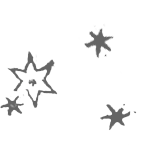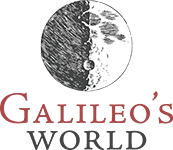Through the Eyes of the Lynx: Galileo, Natural History and the Americas
Strange Creatures
The world revealed to early modern explorers seemed filled with enigmatic creatures. What emblematic meaning might all the strange new creatures hold, who went unmentioned in the ancient sources? How many of the reports of giants, dragons, and other unusual animals should be believed? Fascinated with novel discoveries and unexpected marvels, naturalists sought to relate both the old and new, the enigmatic and the emblematic, in an ongoing dialogue of natural wonder and natural order.
Browse Items on Display
| 0 |
Researches on the Fossil Bones of Quadrupeds Cuvier, Georges (1812) |
|
| 1 |
Discourse on Two New Sciences Galileo, (1638) Under house arrest after his trial, Galileo turned his attention to a number of topics that had long interested him. This is his masterwork of physics, the last book of Galileo’s to be published in his lifetime. These two sciences concern tensile strength and motion. |
 |
| 2 |
The Angry Orlando Ariosto, Ludovico (1672) Ariosto’s famous epic poem is a lively, rambling, serial escapade from one humorous, ironic, sometimes ribald tall-tale to another. One example is the story of Duke Astolfo, Orlando’s cousin, who flew to the Moon in a chariot pulled by winged horses. |
 |
| 3 |
The Recoverie of Jerusalem Tasso, Torquato (1624) This poem became one of the most widely read works of European literature in the 17th century. Tasso created serious characters with human flaws, psychological depth, and even melancholy, setting them in the inspirational but ambiguous era of the Crusades. |
|
| 4 |
Considerations on Tasso Galileo, (1793) Galileo employed his scientific acumen to engage in the literary debates of the day. Here he considered the merits of Tasso and Ariosto, comparing both with Dante. Using his new physics of tensile strength, Galileo refuted Ariosto’s indiscriminate descriptions of giants. |
 |
| 5 |
The Historie of Foure-Footed Beastes Topsell, Edward (1658) Topsell’s natural history includes both familiar and exotic creatures, drawn from sources both new and old. Topsell describes the horse, reindeer and chameleon. He portrays the magnificent appearance of the rhinoceros in the artistic tradition of Dürer. |
 |
| 6 |
Natural History of Serpents and Dragons Aldrovandi, Ulysses (1640) Aldrovandi’s study of serpents describes those from northern Italy with great accuracy. Yet other serpents were reported in literature and by recent travelers. |
 |
| 7 |
Essay on the Mineral Geography of the Paris Basin Cuvier, Georges (1810) Brongniart and Cuvier showed how fossils were the key to unravelling the order of the strata in the Paris basin. Their fieldwork discoveries and anatomical reconstructions of fossils of large quadrupeds demonstrated the existence of former, pre-human worlds. |





